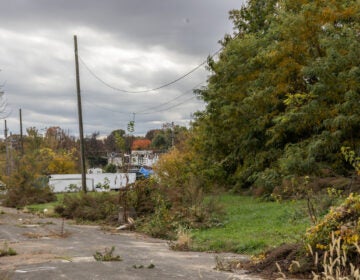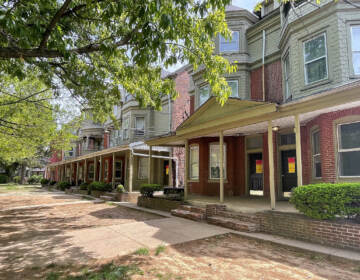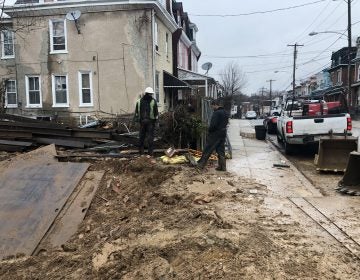Penn visions of Portland, Vancouver
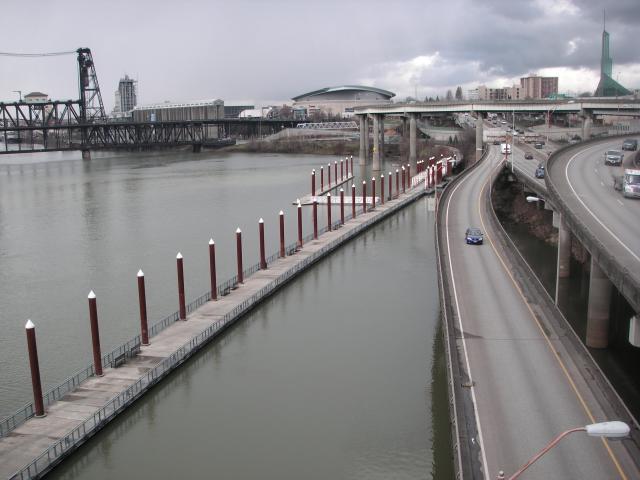
Portland Esplanade
Feb. 3
By Thomas J. Walsh
For PlanPhilly
Which of the following is part of Philadelphia’s immediate urban future?
Protection and creation of vital public spaces. An emphasis on “walkability.” Recapturing Center City as the core of the region – economically and culturally. Sensible investment in transit and housing for all levels of income. Saving historic buildings. Codifying street design for welcoming, people-friendly environments. Public-private partnerships.
Answer: Maybe all of them. But it was a rhetorical question, because the above plans are 37 years old, and were hatched in the city of Portland, Oregon. The results could be seen on billboards decades later: “We planned, it worked.”
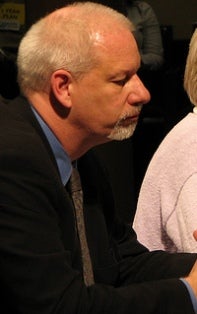
Gil Kelley, Portland’s planning director, was at Penn’s School of Design Monday evening for a lecture hosted by PennPlanning. It was one in a series of talks from experts who have helped to create vision plans for cities and regions, held in conjunction with the school’s second-year planning studio. Students are creating vision plans for Philadelphia in 2040, as a “Global City,” as a “City of Neighborhoods,” and as a “Green and Mobile City.”
Since we can’t time-warp back to 1972 and join Portland in the effort, Kelley came here instead. For the coming three decades, Philly could do worse than to emulate the City of Roses.
Portland’s other nickname – for Kelley, at least – is “the Intentional City.” It achieved its transformation through “sustained political leadership and thoughtful urban planning,” he said, adding that he believes Philadelphia is poised for something similar. Innovation, multiple objective strategies and civic engagement would all have to play a part.
To city and regional leaders in his neck of the woods, along with a critical mass of the citizenry, “urban planning is our major league sport,” Kelley said.
If that’s true, Portland is the Pittsburgh Steelers. And – with all due respect to Jimmy Rollins and Donovan McNabb – in their league, rooting for the home team seems to yield many more rewarding outcomes than a parade every quarter-century or so.
21st century jobs, 19th century spaces
This a town that leads the United States in the percentage of workers who ride a bike to work, at 6 percent. But it wants to be more like its sister city, Amsterdam, in this category: about 33 percent.
Granted, it’s a little brutal on Philadelphia, in the thick of the nation’s most populous region, to compare it to a city of a little more than half a million people in the Pacific Northwest. There are many differences aside from size, but there are a number of similarities. Both are inland port towns with two rivers. Both grew into cities with “streetcar suburbs.” And like Philly, Portland’s history is heavy with industry – steel and aluminum manufacturing, shipping and shipbuilding.
Portland, though, wants to preserve its fallow industrial lands. “Industrial zones should remain industrial,” Kelley said. “Over the long-term, we are going to need that employment base.”
It’s a tough trick, he admits, to reclaim industrial tracts for the future development of more industry. There are no returns on the investment that can even be guessed at, and the process goes beyond brownfield reclamation and remediation, which itself is no picnic.
Portland may be the only city in the nation to be doing this, but it’s looking like a good idea right now if the U.S. economy is going to rebuild itself. As a center for technology, it already has a head start on towns competing for jobs in a green economy. More importantly, by emphasizing in-fill development and building sensible transportation schemes such as its light rail system, Portland is better able to create additional blue collar and “pink collar” jobs.
Easier said than done, but it has to start sometime, a point made last year by Mark Alan Hughes, a Penn social scientist and city planner. Hughes was appointed Philadelphia’s first Director of Sustainability, with a department created in 2008. Last summer – before the credit crisis battered the national economy – Hughes told an audience at the Academy of Natural Sciences that urban in-fill, with people and housing and jobs, is Philly’s great “upside opportunity.”
Creating an inner-city interdependency by finding opportunity in the industrial past is what he was talking about. “Sustainability,” it follows, is trendy word for an idea that is not new. Portland has based all of its planning on the concept since the Nixon administration.
Despite an “urban growth boundary” established in 1973, Portland’s population has spiked over the past decade, with projected growth of 50 to 60 percent in the next 50 years.
The high-level buy-in

Kelley had the unfortunate task of following Larry Beasley, the former planning director for the city of Vancouver, British Columbia, a city that is seemingly an urban planner’s nirvana. He spoke about his city’s design-oriented “experiential planning” techniques that have resulted in an utterly transformed, stunningly beautiful city, one that is virtually unrecognizable when compared to the Vancouver of 1983.
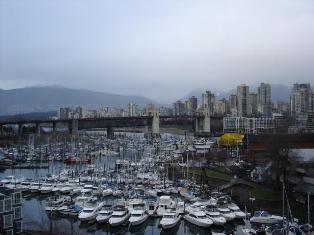
Granville Island & False Creek
Beasley noted that civic engagement processes that come at the convenience of any particular government are less effective than when those processes are constant – and not just in economically pressing times, though a down economy may be the perfect time.
“It’s even about the process of engagement before you engage,” Beasley said. “You have to have a citywide commitment to govern this way. … [And] people have to kind of enjoy this way of governing.”
That said, “There has to be cause and effect,” he added. “You have to pull your processes into timeframes when [they] can be seen to make a difference.” Otherwise, people become dispirited.
“The Intentional City,” then, means a town that “defines a role for itself in the global network of cities and takes actions to develop itself – physically, economically and socially – in light of that aspiration,” Kelley said. It’s a deliberate state of place-making, responding creatively to global trends and issues as they play out locally.
Identity and well-being are at stake, he said. It takes committed, accountable political leadership and a “high-level buy-in” from developers and citizens. It takes empowered neighborhoods and a “grow in and grow up” concept for building. It takes big-league planning and vision.
Left unsaid was that a city’s identity and well-being can’t very well be had with a new stadium, or a first-round draft pick, or even a World Series trophy.
Contact the reporter at thomaswalsh1@gmail.com.
ON THE WEB:
City of Portland: www.portlandonline.com
PlanPhilly, “You want to fix Philadelphia’s infrastructure?” (Mark Alan Hughes): http://www.planphilly.com/node/3354
WHYY is your source for fact-based, in-depth journalism and information. As a nonprofit organization, we rely on financial support from readers like you. Please give today.




